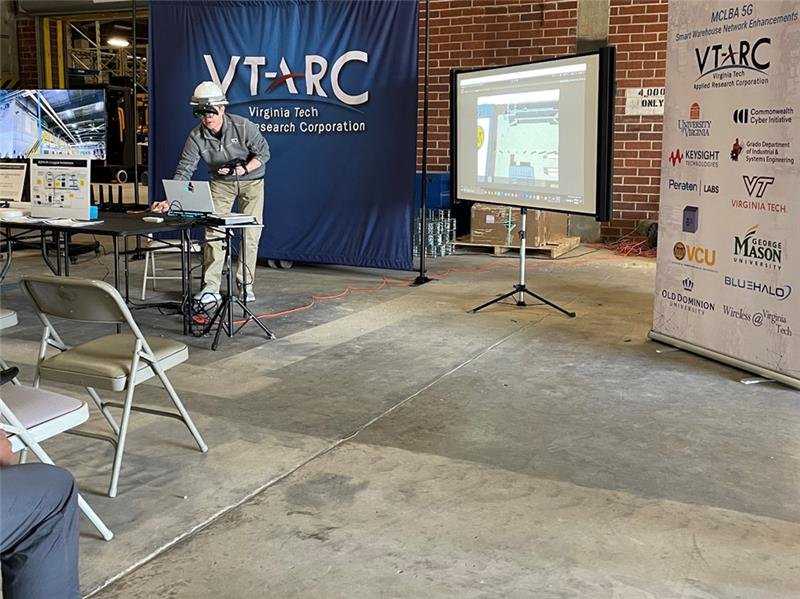Virginia Tech-Applied Research Corporation (VT-ARC), a leader in innovative technologies that safeguard the nation and advance global welfare, announced today it delivered a successful on-site 5G Network Enhancement demonstration at the U.S. Marine Corps Logistics Command (MARCORLOGCOM) in Albany, Ga. A collaborative industry—academia team led by VT-ARC exhibited how highly accurate, energy efficient 5G-enabled Internet of Things (IoT) positioning in a modern smart warehouse will operate upon completion of the network enhancements for the DoD’s 5G Enabled Smart Warehouse Testbed in Albany, Ga.
Convening upon Marine Corps Logistics Base (MCLB) Albany, the VT-ARC team presented a remarkable showcase of the Resilient Distributed Positioning Network (RDPN) enhancement capability and the innovative potential it provides to precisely track warehouse assets in a 5G network to accuracy levels not currently captured in the current 3GPP release. This demonstration showcased the applicability of RDPN via cutting-edge technology in augmented and virtual reality devices which displayed virtual and simulcasted on-screen operations of autonomous IoT-equipped forklifts and warehouse workers performing routine tasks while the RDPN radio positioning signals and a real-time warehouse management system actively tracked the positions of assets and robotic equipment.
Streamlined by the usage of RDPN, the team virtually demonstrated tracking misplaced assets, implementing security measures, following items in motion, and logging histories of location data. John Schull, Lead Project Scientist at the Old Dominion University (ODU) Virginia Modeling, Analysis and Simulation Center (VMASC), who demonstrated RDPN in the extended reality platform, shared his thoughts on the application:
“Our prototype experience uses mixed reality to help demonstrate the art of the possible. With enhancements provided by RDPN, we can utilize the added information and extend it into the meta spatial to provide operators an enhanced perspective that meets them where they are. As mixed reality hardware solutions get better, existing infrastructure systems need to start to account for the integration of spatial information for operational use cases.”
Read the full Article: Here



Comments are closed